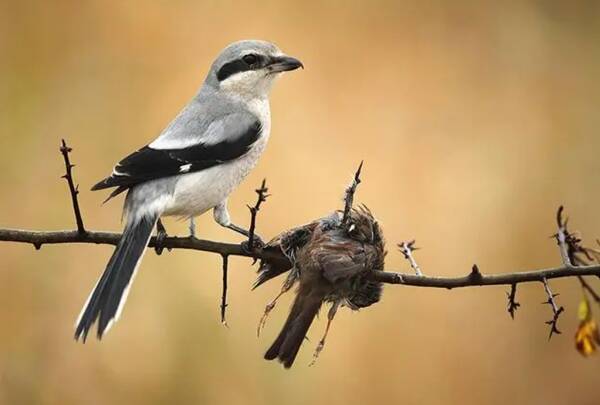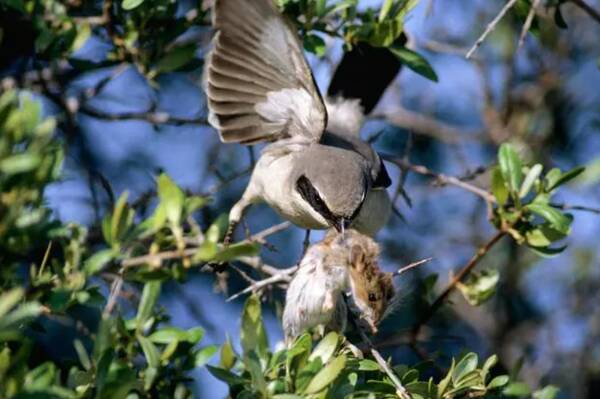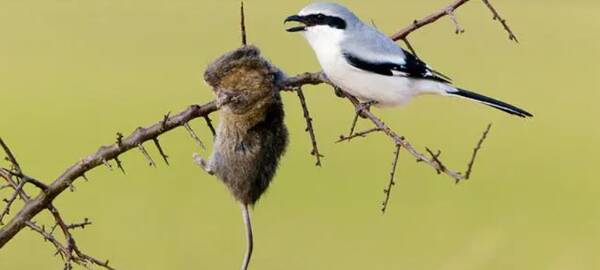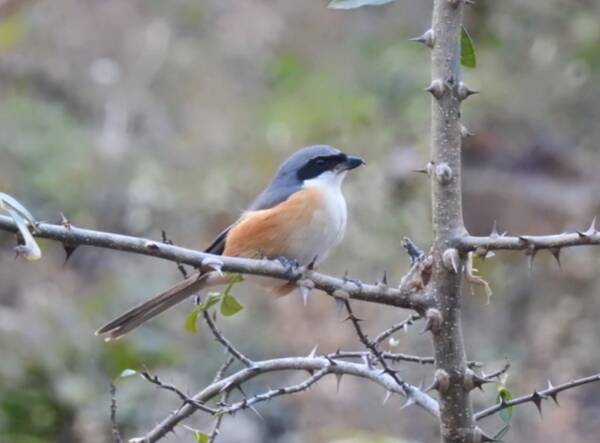There is a small bird in nature with orange-red wings and round, almond-shaped eyes. It looks sweet but is a "hidden killer." In the wild, if you see the corpses of frogs, geckos or grasshoppers stuck on branches or wire fences, don't think it's a prank played by children. Maybe these are the work of shrike birds.

The captured prey not only loses its life but also suffers humiliation. The hunter hangs the body on a branch or fence. Fortunately, it is already dead, otherwise this would be a large-scale social death scene.
If you want to ask why the cute and docile shrike behaves like "killing insects and hanging corpses", you have to look for the reason from itself.

The mouth is sharp and the feet are weak
Shrikes belong to the family Shrikeidae, which is not a hawk, but is known as a "passerine bird of prey" and has sharp hooks on its beak and talons. It has a ferocious temperament and mainly preys on small mammals, birds, lizards, frogs and insects. Although its claws are hooked, its leg muscles are not well developed and its claws are relatively weak. It cannot use its legs and claws to process food at the same time like a raptor. At this time, the shrike will "nail" the prey to the branch and then use it to The beak is used to tear and eat bit by bit. This kind of "wild fruit and woody meat skewers" has a unique flavor.

Born without a crop, figure out your own solution
As we all know, most birds have an organ called the crop, which is used to store food so that it can be eaten whenever they are hungry. But shrike birds don't have this organ. To obtain energy, they need to eat continuously. So the shrike came up with a way to get the best of both worlds: they hung the food on branches, which on the one hand prevented land animals from grabbing it, and on the other hand, it also retained the original flavor of the food to the greatest extent, making it easy to store and not easy to spoil. Compared with the freshness of the food, being able to eat well is the most important thing to the shrike.
Claim territory to other birds
Every year in spring, birds begin to breed. If you want to start a family, you often need to find a safe, comfortable and food-rich "territory" as a breeding place. This "territory" is usually not allowed for other birds to enter. In order to declare its "territory" to other birds, the shrike will warn possible "intruders" by "hanging its corpse" to avoid losses caused by conflicts with other birds over the territory.

Affordable bird
"Hanging corpses" is also a way for male shrike to show their strength. Abundant food seems to be a confession to the female shrike: "Look at me, I can catch insects and make money, I am rich and motivated, come and choose me!" Such behavior can attract the female's attention and help the male get out of singlehood as soon as possible. Finish the big thing soon - have children. Some data show that male shrikes whose "hanging corpses" have been removed are more difficult to find a partner, and may even "die alone." Of course, those shrike couples that successfully pair up and give birth to offspring will raise their children together, and the couple will fly together. It's like a pair of birds for life. Shrikes are really a textbook of love.
Expand recipes and eat smart
In nature, lions and tigers are not the only ones to be feared. There are many snakes, insects, rats, and ants that carry highly venom and are also very deadly. The dull-headed shrike that lives in North America often eats an insect called the Oriental locust. This insect contains a large amount of toxins. Eating it directly will not only cause nausea, but may even be life-threatening. For their own safety, the shrike will dry it and eat it. Studies have shown that after 1-2 days of "hanging corpses", the toxins in the Oriental locust will disappear during drying and exposure to the sun. This can not only fill the bellies of shrike birds, but also make their diet wider than other birds, thus also Improved its ability to survive in harsh environments.
Convenient for the cubs to eat and increase the flight rate
Shrikes will also hang food near their nests so that their young can easily eat. Young birds that get enough food will be stronger and their survival and flight rates will be greatly improved.

To sum up, the shrike’s butcher “hanging meat” behavior is caused by a combination of factors. Shrikes are not born with such a habit. Generally, young birds only learn this skill when they are 4-5 weeks old, and adult birds are much more skillful in operating it than young birds. Although cruel, for the shrike: survival is the first priority!
animal tags: shrike passerine shrikeidae bird
We created this article in conjunction with AI technology, then made sure it was fact-checked and edited by a Animals Top editor.